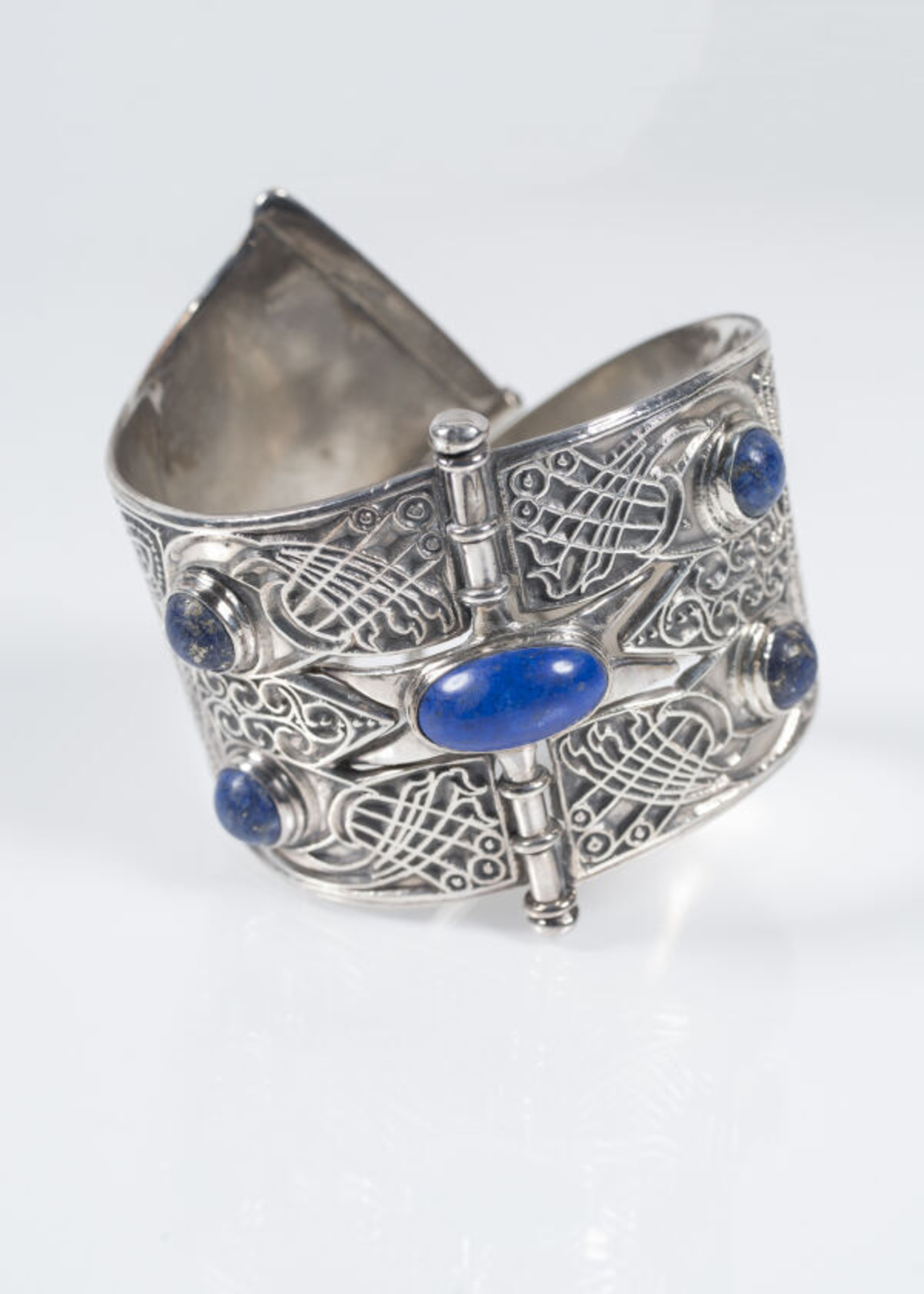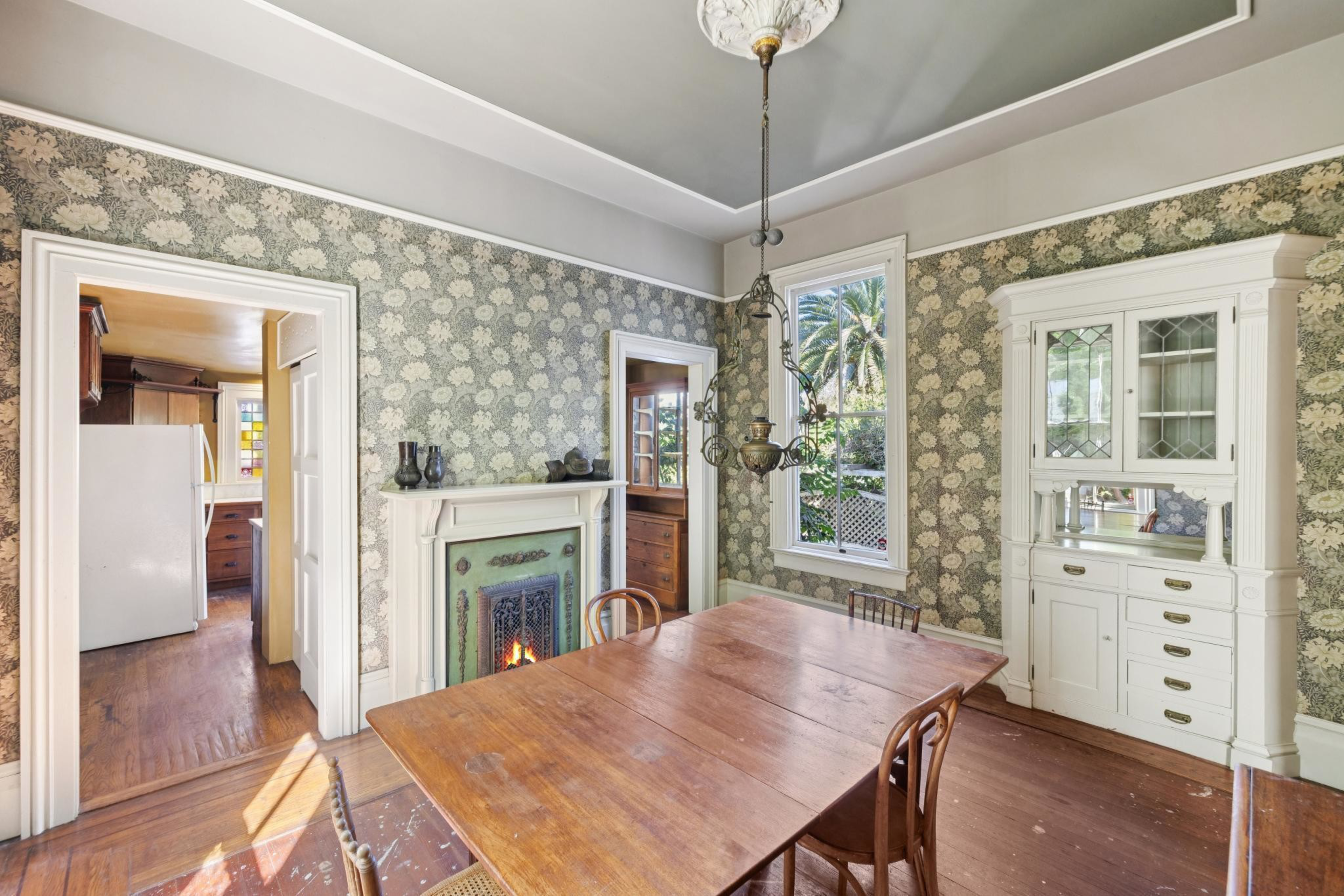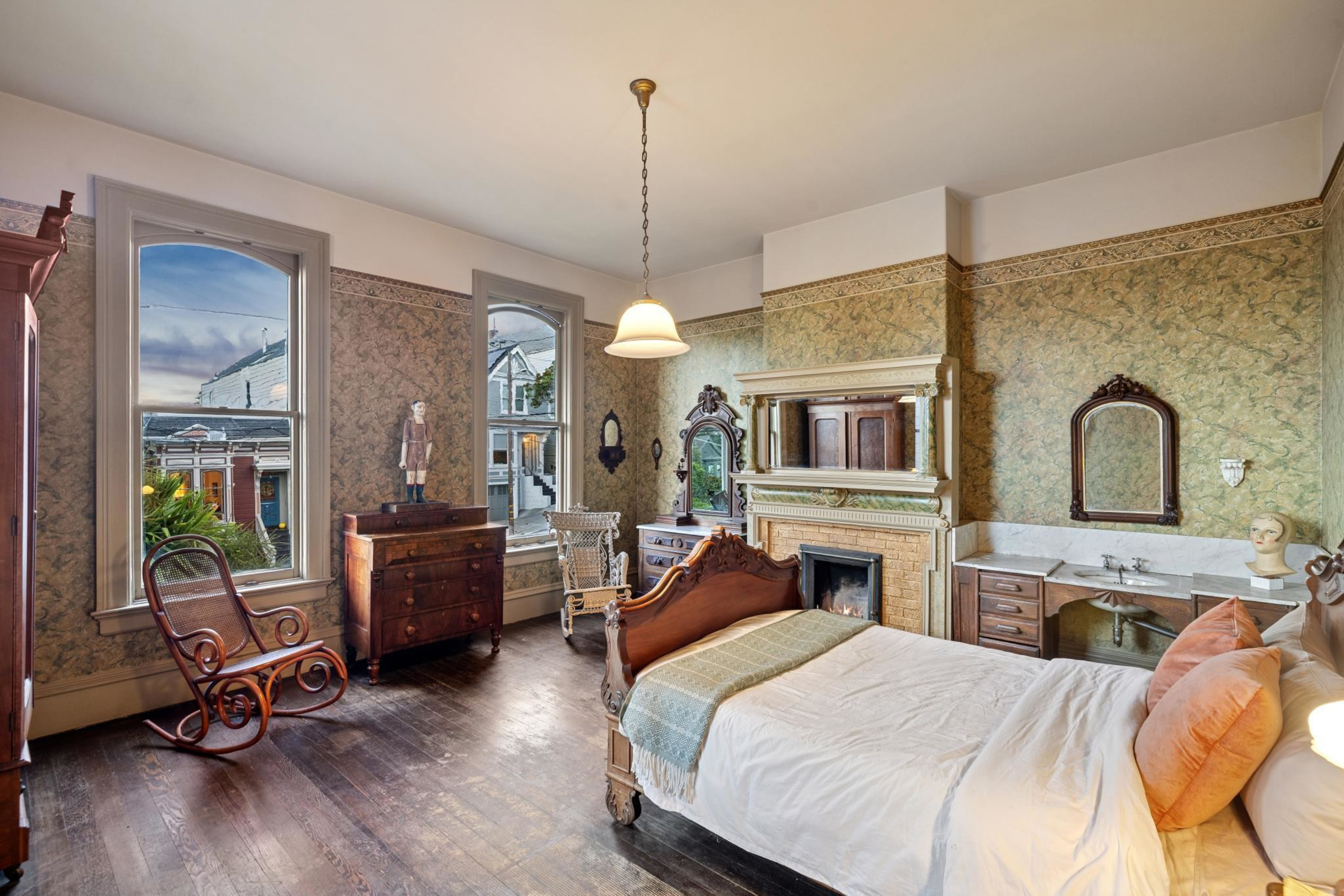Even at a funeral, Imogene Gieling was the life of the party.
Dan Frey was 12 when he first met his Aunt Imogene in the early 1960s, just after the sudden death of his father. Gieling, a famed metal artist, and her topographer husband, John, traveled from San Francisco to Texas to mourn her brother and ended up lifting everyone’s spirits.
“It was very traumatic and very hard on everybody,” he recalled in an exclusive interview with the Standard. “But she and John came and just changed the whole atmosphere.”
Four years later, during the Summer of Love in 1967, a then-16-year-old Frey made the reverse trip, traveling to San Francisco to visit his aunt’s new home at 22 Beaver St. in Duboce Triangle. The Italianate Victorian had been built by a silver refiner in the 1870s, but the five-bedroom, four-bathroom, three-story home was being primarily used as a hippie crash pad. The city even threatened to condemn the 4,000-square-foot building before the Gielings began their decades-long restoration.
“They had made it livable,” Frey said. “We all thought it was super cool.”

Over the next half-century, Frey visited many times. It was where he had his first hit of cannabis as a teenager and where he stayed in 2018 when attending a retrospective of his aunt’s long artistic life at the Museum of Craft and Design. Gieling was 95 and blind by then, but she still recognized people by voice and surprised her family by inviting all her old friends and colleagues back to the house for a raucous after-party.
Shortly after the museum event, Gieling suffered a stroke, and her health deteriorated. She remained in her longtime home with a caretaker until she died last winter, just shy of her 102nd birthday.
Frey is now the family representative for the sale of the home, which came to market last month asking $3.85 million. Those millions could be game-changing for the local arts groups that will benefit, if the home can find a buyer.
Gieling and her husband — who died in the early 1980s — didn’t have children; instead, she wanted the sale of her home to support the local craft and design community she helped foster. When the home sells, the proceeds will do just that, including a substantial sum for the Oakland Museum of California.
“All the proceeds are going toward her art form, which is craft and decorative arts,” Frey said. “Every bit of it.”
A rare gift
Oakland Museum of California Director and CEO Lori Fogarty heard about the Gieling house gift early in her nearly 20-year tenure at the museum, which celebrates the state’s art, history, and natural environment.
Back in the early 1990s, Gieling had committed to using proceeds from the eventual sale of her home to support a curatorial position in craft and design.
Fogarty attended several parties at the “magical” property and recalled Gieling, who friends and colleagues knew as “Tex,” as a “fiesty” and fashionable spitfire who was deeply committed to craft as an art form.
“I count myself lucky to have had a chance to know her, and we are grateful that her impact will continue through her support of OMCA and a position named in her honor,” Fogarty said.

To the director’s knowledge, it is the first time the museum has had a donor commit funds from the sale of their home, though it does happen on occasion in the nonprofit world. Last year, pioneering venture capitalist George Sarlo gifted the proceeds from the sale of his $26 million Sea Cliff home to his family’s foundation.
Though a San Franciscan for over 60 years. Gieling was closely connected to the Oakland museum. Several of her jewelry pieces from the 1960s and ’70s are on display in its collection and a longtime friend was a veteran curator.

Exactly how much the museum will receive is still unknown. Gieling left her heirs in charge of determining how to divvy up the proceeds of the eventual sale among the museum and other craft and decorative arts-related nonprofits. Her nephew said the organizations would most likely be in the Bay Area.
But first, the historic house has to find a buyer.
The value of history
It would be hard to know exactly what is original in the home and what was salvaged and installed by the Gielings over the years — except that Imogene kept meticulous records of their improvements.
Those documents are how Wendy Storch and Maria Marchetti, the Sotheby’s agents who listed the home in late September, know the oil lamp over the dining room table is made from cast iron but purchased at CostPlus, while the glass cabinet in the kitchen is a combination of an old Dr. Scholl’s Foot Plaster display case and a $5 chest from Goodwill. It’s also how they know the main floor bathroom was once a terrarium for a slow loris, a cutely bug-eyed but venomous primate.
“There’s lots of amazing, colorful detail,” said Storch.

Those stories are now hung on the William Morris wallpaper throughout the three-story home — a sly bid to win over history buffs. The house was landmarked by the city in 2019, which puts some restrictions on what the next owner can do, particularly on exterior details. So far, according to Storch, buyers who seem most interested say they want to bring the home up to modern standards while keeping its Victorian banisters, moldings, and layout intact.
The investment required to bring the home up to date is one factor that could deter buyers; a bigger one may be the zen-like patience needed to wait through the arduous permitting and construction process that will come with rehabilitating such a large and historic home. Storch believes the home’s generous footprint and grand features, like its millwork, high ceilings, and the enormous lemon tree and carriage house in its garden, will convince a buyer to take the plunge.
“I have absolute faith, and I’m excited to find out who they are,” she said.
Frey has his fingers crossed that Storch is right and someone with a preservationist bent will be the buyer.
“I’m hoping that the person [who] buys it would be the right person to love and appreciate it the way [my aunt] did and to carry on the way she lived in it,” he said. “That would be my hope.”
